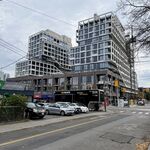Riverdale Rink Rat
Senior Member
Member Bio
- Joined
- Apr 29, 2008
- Messages
- 2,775
- Reaction score
- 273
- Location
- Back to East York... Alas!
I rent in Toronto now and I intend to move back to the United States in a couple of years where housing and cost of living is much cheaper (thankfully I have the ability to live in both countries)... so there is some proof if you want it of someone young that is not putting money in this absurd housing market and renting instead. There is some long-term affordability issues in Toronto for young people with limited equity, many whom will decide to live elsewhere. Why would I let the elderly folks and speculators get rich off me? I am not going to be the fool holding the bag by overpaying for a garbage home in Toronto for 4-5 times what I would pay for the same thing in the United States. On top of that housing is illiquid, you cannot deduct mortgage interest, could be subject to a land transfer tax, tons of closing and loan origination fees, and property taxes are only going to go up when the development slows (which I think is inevitable as the market is slowing now and Ontario/Toronto has generous social programs that need to be funded). I don't see a crash happening anytime soon, but I also don't see Toronto as a place that I want to live in the future. You just don't get a good bang for the buck here.
None of what you say is wrong, but you need to take a much closer look at closing costs in the US (and property taxes) before going off half-cocked. However, the biggest question is 'where do I want to live'? The housing prices in my brother's neighbourhood in San Francisco are much higher than mine in Toronto. Sure, if you want to move to Buffalo or Detroit, it'll be much cheaper. But you'll be living in Buffalo or Detroit. I'd prefer Toronto real estate at a much higher price, as IMHO the value is much higher as well.




